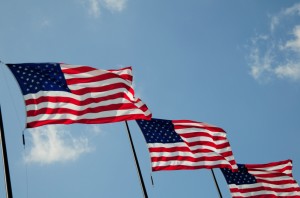“Connecting America: Building Resilience with Social Media” from the Center for National Policy in Washington, D.C. is an interesting read about the post 9/11 world and the growth of social media. The focus is on emergency response to tragedies. The premise of the 26 pages can be summarized by stating that social media can be an integral part of communications when the worst happens. The report provides some excellent examples of social media use during emergencies.
“Over the course of this year the Task Force for a Resilient America has worked to answer the question, “How can we effectively communicate the message of resilience to the American people?” In the course of our work it became clear that supporting the spread of the core values of resilience – such as citizen engagement and participation could best be accomplished through the use of social media, which thrives on these values.”
“How can we use social media tools to empower people to act on the message of resilience and take an active role in preparedness, response and recovery?” Our recommendations provide some operational suggestions – such as an updated Emergency Broadcast System, maintaining Social Media Emergency Operations Centers, and Critical Network Notifications – that can be quickly accomplished if resources are applied and political will exists.”
My Observations:
No one is a greater proponent of social media than me and I appreciate the willingness of the Center to take a hard look at this issue. Bravo!!! Social media “does” have a role in responding to emergencies.
But I have administered the emergency media response to dozens of major events and I have several articles about emergency public relations on this site. My concerns come down to two points:
1. Government and nonprofits will never have the capacity to monitor all available social media sites.
2. Unsubstantiated and dangerous rumors will rule the social media world. During emergencies, people respond badly to misinformation.
We’re all heard of the collegiate experiment of telling one person at the beginning of a line a message and getting an entirely different message at the end.
So Twitter and Google+ is alive with reports that the dam is breaking and that there should be an immediate evacuation of tens of thousands of people. What happens when the rumors turn out to be completely false? How many people get hurt in the process?
Social media has its place in emergencies and authorities need to do the best they can to monitor them along with mainstream media. But the primary mission of social media monitoring will be to react to and correct the endless number of mind-numbing rumors that have no basis in fact.
There are dozens of instances where mainstream media offered unsubstantiated reports from citizens and had to work hard to retract and contain the damage. If the gatekeepers of facts can’t get it right, do we really expect better of Facebook, Twitter and Google+?
As I said in the article cited below, “Let’s not set unrealistic explications for government, nonprofits and the people we serve. All that does is hurt response during emergencies.”
Best, Len.
See: http://leonardsipes.com/social-media-during-emergencies-an-unrealistic-expiation-2/
Source: http://www.centerfornationalpolicy.org/ht/d/EventDetails/i/35011





Leave a Reply
You must be logged in to post a comment.